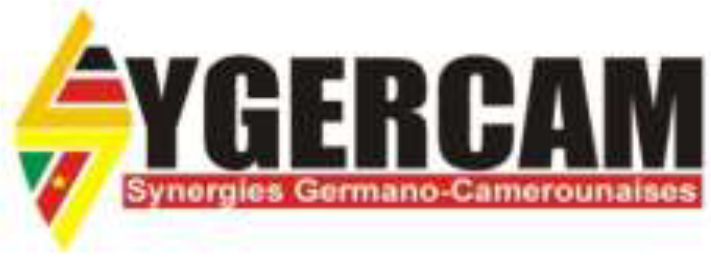
In this exhibition space, we will talk about the issues, energy and electricity issues in Africa (Cameroon). It will have the actors who will present energy solutions through sources such as solar, hydroelectricity, wind power. and the
biomass.
Electricity production was broken down in 2014 into 73 % of hydroelectricity, 1 % of biomass and 26 % of fossil fuels (oil 12.8 % and natural gas 12.9 %). Electricity consumption per capita is only 9 % of the world average and 4 % of that of France.
The energy transport development plan provides for the construction of the following works:
- A 150 MW gas-fired thermal power plant in Kribi
- The rehabilitation of the Edéa and Song Loulou hydroelectric plants for a power gain of around 30 MW
- A reservoir dam in Lom Pangar with a 50 MW foot plant
- A 280 MW hydroelectric development in Nachtigal
- A 75 MW hydroelectric development in Warak on the Bini
- The Song Dong (280MW) or Memve'elé (200 MW) hydroelectric facilities will have to be commissioned.
Cameroon has a total of 13,104 localities. The total population in 2004 is estimated at 16.5 million inhabitants for approximately 3.2 million households. Only 2,111 localities are electrified.
The proven gas reserves in Cameroon are estimated at 157 billion m3 according to the National Hydrocarbons Company (SNH); this gas is not yet exploited.
Regarding solar energy, Cameroon has abundant and available potential, but very little exploited.
This presents us with the opportunities to invest in this sector such as:
- Biomass Plant
- Solar power plant or solar field
- Wind
- Gas exploitation
- Electricity production and distribution
- Hydroelectricity
- Infrastructure

In this exhibition space, we will talk about the issues, energy and electricity issues in Africa (Cameroon). It will have the actors who will present energy solutions through sources such as solar, hydroelectricity, wind power. and the
biomass.
Electricity production was broken down in 2014 into 73 % of hydroelectricity, 1 % of biomass and 26 % of fossil fuels (oil 12.8 % and natural gas 12.9 %). Electricity consumption per capita is only 9 % of the world average and 4 % of that of France.
The energy transport development plan provides for the construction of the following works:
- A 150 MW gas-fired thermal power plant in Kribi
- The rehabilitation of the Edéa and Song Loulou hydroelectric plants for a power gain of around 30 MW
- A reservoir dam in Lom Pangar with a 50 MW foot plant
- A 280 MW hydroelectric development in Nachtigal
- A 75 MW hydroelectric development in Warak on the Bini
- The Song Dong (280MW) or Memve'elé (200 MW) hydroelectric facilities will have to be commissioned.
Cameroon has a total of 13,104 localities. The total population in 2004 is estimated at 16.5 million inhabitants for approximately 3.2 million households. Only 2,111 localities are electrified.
The proven gas reserves in Cameroon are estimated at 157 billion m3 according to the National Hydrocarbons Company (SNH); this gas is not yet exploited.
Regarding solar energy, Cameroon has abundant and available potential, but very little exploited.
This presents us with the opportunities to invest in this sector such as:
- Biomass Plant
- Solar power plant or solar field
- Wind
- Gas exploitation
- Electricity production and distribution
- Hydroelectricity
- Infrastructure

In this exhibition space, we will talk about the issues, energy and electricity issues in Africa (Cameroon). It will have the actors who will present energy solutions through sources such as solar, hydroelectricity, wind power. and the
biomass.
Electricity production was broken down in 2014 into 73 % of hydroelectricity, 1 % of biomass and 26 % of fossil fuels (oil 12.8 % and natural gas 12.9 %). Electricity consumption per capita is only 9 % of the world average and 4 % of that of France.
The energy transport development plan provides for the construction of the following works:
- A 150 MW gas-fired thermal power plant in Kribi
- The rehabilitation of the Edéa and Song Loulou hydroelectric plants for a power gain of around 30 MW
- A reservoir dam in Lom Pangar with a 50 MW foot plant
- A 280 MW hydroelectric development in Nachtigal
- A 75 MW hydroelectric development in Warak on the Bini
- The Song Dong (280MW) or Memve'elé (200 MW) hydroelectric facilities will have to be commissioned.
Cameroon has a total of 13,104 localities. The total population in 2004 is estimated at 16.5 million inhabitants for approximately 3.2 million households. Only 2,111 localities are electrified.
The proven gas reserves in Cameroon are estimated at 157 billion m3 according to the National Hydrocarbons Company (SNH); this gas is not yet exploited.
Regarding solar energy, Cameroon has abundant and available potential, but very little exploited.
This presents us with the opportunities to invest in this sector such as:
- Biomass Plant
- Solar power plant or solar field
- Wind
- Gas exploitation
- Electricity production and distribution
- Hydroelectricity
- Infrastructure
